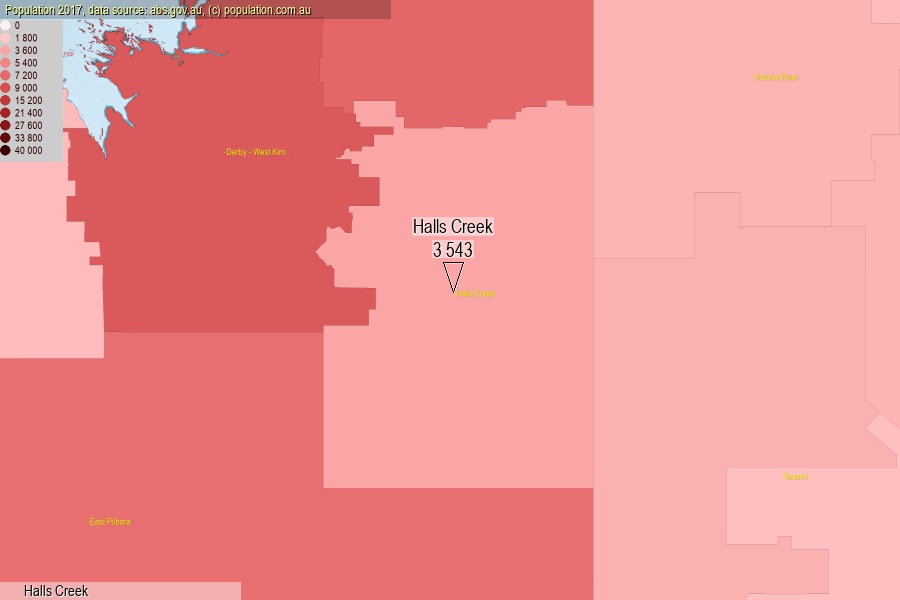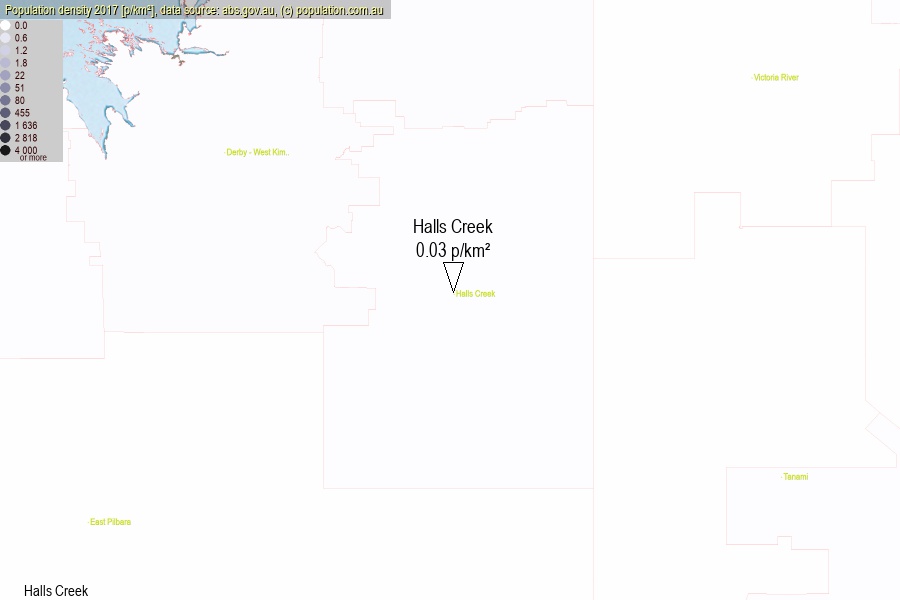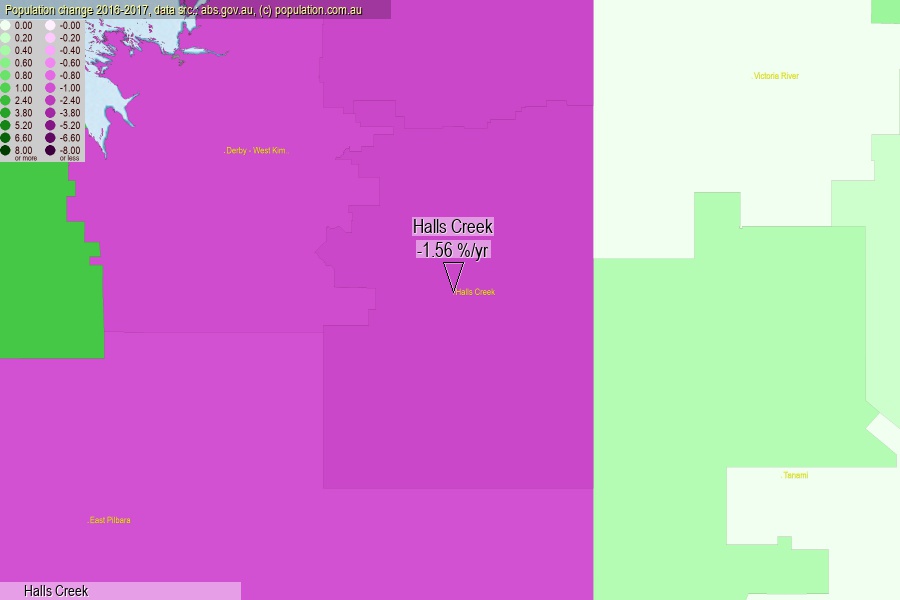 population.com.au
population.com.auLast official estimated population of Halls Creek (as Statistical Area Level 2) was 3 543 people (on 2017-06-30)[2]. This was 0.01% of total Australian population and 0.137% of WA population. Area of Halls Creek is 135 360.40 km², in this year population density was 0.03 p/km² . If population growth rate would be same as in period 2016-2017 (-1.56%/yr), Halls Creek population in 2025 would be 3 125. [0]



Click to enlarge. Halls Creek is located in the center of the images.
Population [people], population density [p./km²] and population change [%/year] [2]
View borders » (new window) [4]
[2001-2002] +0.80 %/Yr.
[2002-2003] -0.08 %/Yr.
[2003-2004] -1.19 %/Yr.
[2004-2005] -0.03 %/Yr.
[2005-2006] +0.40 %/Yr.
[2006-2007] +0.85 %/Yr.
[2007-2008] +1.34 %/Yr.
[2008-2009] +0.57 %/Yr.
[2009-2010] +0.18 %/Yr.
[2010-2011] +0.49 %/Yr.
[2011-2012] -0.90 %/Yr.
[2012-2013] -1.04 %/Yr.
[2013-2014] -1.99 %/Yr.
[2014-2015] -2.11 %/Yr.
[2015-2016] -1.75 %/Yr.
[2016-2017] -1.56 %/Yr.
[0] Calculated with linear interpolation from officially estimated population
[1] Read more about SA2 and Australian Statistical Geography Standard (ASGS) on abs.gov.au
[2] Population data from Australian Bureau of Statistics (Population and density: 2017; change: 2016-2017)
[3] Digital Boundaries: Australian Statistical Geography Standard (ASGS) 2016.
[4] Border coordinates are simplifyed using Ramer-Douglas-Peucker algorithm.